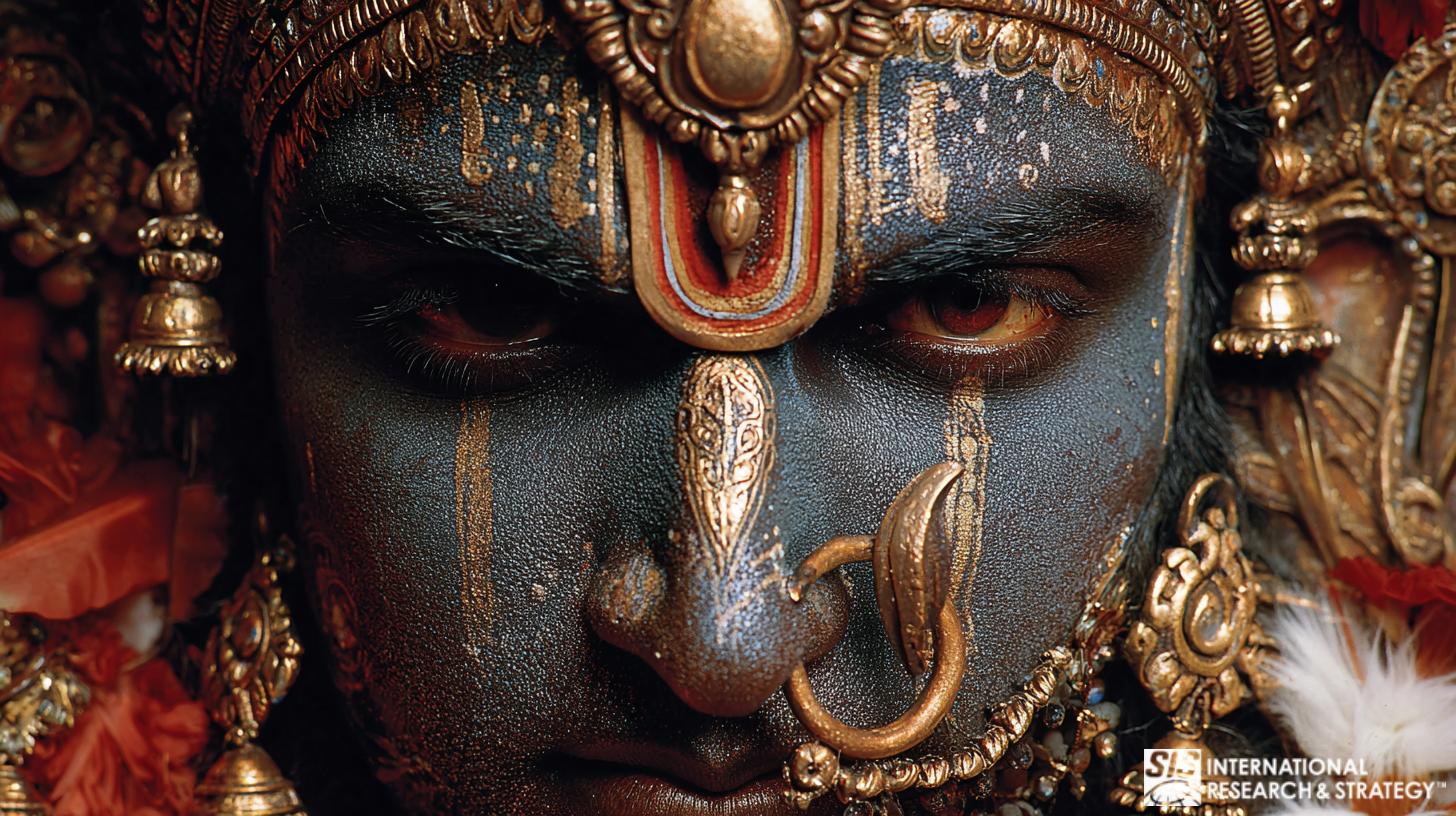Badania rynku religii hinduskiej

Individuals and organizations establish businesses with the primary goal of earning profits. Conducting Hindu Religion Market research will help them understand the limits and conditions in that sector. All considerations and efforts are made to ensure maximum return on investment.
High demand usually translates to high profit, which positively reflects on the establishment’s image. It is clearly assumed that demand is linked to consumer response.
Consumer behavior has always influenced the demand for products and services. One factor for such behavior involves the consumer’s religion.
Religion is a noteworthy topic because of how it directly impacts the economy. Hinduism, for instance, has a great grasp on South Asia and certain South East Asian countries. Any interested investor must understand the relationship between the religion and its devotees before making any financial move.
Table of Contents
What is the Hindu Religion?
Hinduism is the third-largest religion in the world, after Christianity and Islam. It has an estimated 1.3 billion devotees worldwide, mostly in South Asia and South East Asian countries. The followers of the religion are called Hindus.
The Hindus primarily worship three gods: Brahma, the creator, Vishnu, the preserver, and Shiva, the destroyer. However, there are around 33 gods and deities, usually categorized into different groups. Brahma, called by a variety of names, is the only supreme being among them.
The Hindu religion strongly believes in the doctrines of samsara and karma. Samsara means the continuous cycle of life, death, and reincarnation, while karma refers to the return of one’s actions, whether good or bad.
What makes Hinduism different from other religions is it does not have any formal ex-communication or conversion from the faith.
Countries Practicing Hindu

India, being one of the most populated countries in the world, is composed of the majority of Hindus. Almost a billion Indians are Hindu Religion devotees, totaling 80% of Hinduism followers.
Nepal, Bangladesh, Indonesia, Pakistan, Sri Lanka, Malaysia, and Burma are other countries that practice the Hindu religion.
As for non-Asian countries, the United States has around 1.8 million Hindu devotees, and the United Kingdom has 800,000.
Global Overview of the Hindu Consumer Segment
| Market Metric | Key Data Point | Source |
|---|---|---|
| Global Population Size | Over **1.2 billion people** globally, making it the third-largest religious group, concentrated primarily in India and Nepal. | Pew Research Center (Religious Projection) |
| Indian Market Influence | Represents approximately **80% of India’s population**, making cultural and religious factors inseparable from mass-market consumer behavior, particularly in food, apparel, and festivals. | Census of India (Religious Data) |
| Digital Consumption & Content | High demand for regional and religious content. **Online video platforms** and **e-commerce sites** often see spikes in activity correlating with major Hindu festivals (e.g., Diwali, Holi). | Statista (E-commerce Data, India Focus) |
| Global Diaspora Economic Power | Significant, affluent Hindu communities in the US, UK, Canada, and Gulf nations, creating important **diaspora-specific consumer markets** for cultural goods and services. | Migration Policy Institute (Global Migration Data) |
| Ethical and Lifestyle Factors | Strong cultural factors influence purchasing: **vegetarianism** (prevalent among many segments), emphasis on **purity and natural ingredients**, and high expenditure on **family and community events**. | World Bank (Consumption Patterns Data) |
Source: Data compiled from major international and governmental bodies, as linked above.
Industries Affected by the Hindu Religion

Hindu religious practices only affect industries within the area where they are primarily practiced. Since almost all Indians are Hindu, the whole country is affected. Focusing on Hindu Religion Market research will help industries gain insight.
Dietary choice is an important factor in the Hindu religion. Hindus are taught to be Lacto-vegetarian, avoiding meat and eggs. Most practice limiting their meat diet instead of abstaining from meat altogether.
Hindus do not eat beef, as cows are considered sacred and represent Mother Nature. Animal lard is also not allowed, making it lucrative for vegetable-based oil to prosper. Interestingly, dairy products are allowed.
Consumption of alcohol is still up for debate. More conservative Hindus avoid consuming alcohol, believing it has a bad influence on the mind and body. On the other hand, liberal Hindus indulge in wine, especially at social gatherings. One of the companies that dominates the wine industry is Sula Vineyards. This wine manufacturer has 52% of the Indian market share.
Similar to alcohol, tobacco is not entirely prohibited. However, some Hindus believe that intoxication is a form of sin. It appears, though, that there is a significant demand for tobacco-based products. Indian Tobacco Company Limited, the leading cigarette company, alone has a market capitalization of 3.3 trillion rupees (around $40 billion).
Another industry positively affected by the Hindu religion is the incense market. Incense, better known in India as Agarbatti, is an integral item in various religious rituals.
In the textile industry, saree and angarkha are in demand. Women wearing their saree connotes how they value their culture as it portrays the deity, while men wear angarkha, which means protecting the body. Although angarkha is now produced and worn by both sexes.
Możliwości

Here are opportunities for investors and businesses interested in Hinduism in places where the religion is dominant:
The pork meat industry and the import approval by the Indian government: In recent years, many liberal Hindus have embraced pork-based products as part of their diet. The Indian government announced its approval of allowing the import of pork meat products from the United States. Pork is not a staple in most Indian cuisines. However, many states in India, such as Goa and Karnataka, use pork more in comparison to others. Punjab and Haryana states started building their pig farms to meet the growing demand. Consequently, it influenced the rise of pork dishes, pushing restaurants to update their menu. The Indian government is hoping to expand the range of pork meat available in their local market.
Vegan-Friendly Meal Choices: Conservative and food-conscious Hindus rely on fruits and vegetables. Businesses offering vegan-based dishes see this as an opportunity to take over. Interstingly, potatoes is the most consumed vegetable in India, followed by legumes, cauliflower, and baby spinach. Vegan meat manufacturers also follow this trend, offering plant-based meat alternatives. Many start-ups in India offer their products online, which are usually composed of gourmet-inspired vegan dishes.
Continue demand for saree: It is expected that there is a significant demand for saree in the following years. Many textile manufacturers and fashion boutiques have incorporated saree to fit modern expectations. However, the younger generations tend to lean on salwar kameez (also known as Western clothing), especially those in semi-urban and urban places. But the saree category is to remain predominant in the industry, catering mostly to elderly and middle-aged women.
The Redemption of the Incense Market: The incense market suffered a dip a few years ago. However, it has recently experienced growth, with the agarbatti industry experiencing a 30% increase in demand. To maintain its momentum, the industry exports incense to up to 150 countries. Industry trends also show that consumers are inclined to purchase agarbatti in economy or value packs. This means that customers are more likely to purchase in bundles than in pieces.
Lokalizacja naszego obiektu w Nowym Jorku
11 E 22nd Street, piętro 2, Nowy Jork, NY 10010 T: +1(212) 505-6805
O firmie SIS International
SIS Międzynarodowy oferuje badania ilościowe, jakościowe i strategiczne. Dostarczamy dane, narzędzia, strategie, raporty i spostrzeżenia do podejmowania decyzji. Prowadzimy również wywiady, ankiety, grupy fokusowe i inne metody i podejścia do badań rynku. Skontaktuj się z nami dla Twojego kolejnego projektu badania rynku.

